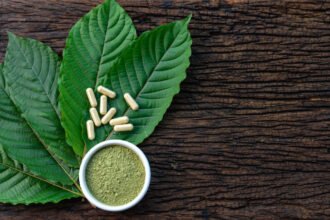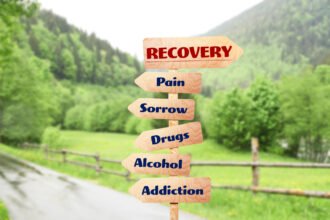Healthworks Collective is committed to raising awareness about the growing dangers of substance misuse and the devastating outcomes that often follow. You may not realize how quickly recreational or prescribed substances can turn into a major health crisis.
- Overdose Deaths Are Rising
- Opiates
- Trends in U.S. Drug Overdose Deaths (December 1999–June 2023), by Drug Type
- 1. Fentanyl
- 2. Heroin
- 3. Prescription Opioids
- How to Treat an Opioid Overdose
- U.S. Overdose Deaths 1999-2022 by Drug or Drug Category
- Benzodiazepines
- 4. Ativan (lorazepam), Valium (diazepam), Xanax (alprazolam), and Klonopin (clonazepam)
- How to Treat a Benzodiazepine Overdose
- Psychostimulants
- Be Ready to Save a Life
There are serious risks involved when people become dependent on drugs or alcohol. AmericanAddictionCenters.org reports that 48.5 million people over the age of 12 battled a substance use disorder in the past year. You might not see the warning signs at first, but things can spiral fast without support. Keep reading to learn more.
Overdose Deaths Are Rising
It is hard to ignore the rising number of overdose deaths each year. The National Institute of Drug Abuse reports that over 105,000 persons in the U.S. died from drug-involved overdose in 2023. You are not alone if you’ve lost someone close to this crisis.
There are people who never expected to become addicted but still ended up struggling. You might be surprised how quickly tolerance builds and how much more dangerous that makes the drug. It is not just about illicit use—prescription misuse plays a major role too. You need to understand how subtle the early signs can be.
You can’t always count on a second chance after a dangerous dose. It is true that many overdoses happen in the presence of others who feel helpless. There are interventions like naloxone, but not every situation allows time for it. You should take action before someone reaches that point.
There are families, schools, and workplaces trying to respond to this growing issue. You may feel overwhelmed by how common substance abuse has become, but early support can change outcomes. It is never too early to start talking about safer habits and access to treatment.
Common overdose substances, including illicit and prescription drugs, have contributed to a concerning rise in overdose deaths over the last two decades. Knowing how to respond to possible overdoses—and carrying the right equipment—is key to reversing this worrying trend.
It’s important to remember that drug abuse leading to overdose doesn’t always lead to fatalities when assistance is on hand. Timely bystander intervention plays a critical role in reversing overdoses and saving lives.
Opiates
Opiates are the number one cause of overdoses in the United States. Opiates fall into different categories when assessing their potential for overdose: synthetic, prescription (Rx) opioids, and “natural” opioids like heroin. Their use, potency, and potential for substance abuse impact how likely they are to cause an overdose.
Opioid-involved overdose deaths have multiplied since 1999, with deaths caused by synthetic opioids like fentanyl rising 103-fold this millennium. This has led to the development and widespread availability of opioid overdose reversal products like NARCAN® Nasal Spray (naloxone), which is sold in drug stores and available from leading online retailers like True Rescue. Naloxone saves lives if administered within minutes following an overdose.
Brian Graddon, ex-SWAT medic and CEO of True Rescue explains:
Naloxone binds to opioid receptors in the brain, which blocks these drugs’ mechanisms of action. This in turn reverses the dangerous respiratory depression that can result from an overdose. Naloxone is effective against illicit opioids like fentanyl and heroin as well as prescription opioid medications.
Trends in U.S. Drug Overdose Deaths (December 1999–June 2023), by Drug Type

1. Fentanyl
Fentanyl is an incredibly potent synthetic opioid used legally in medical settings as a powerful analgesic. It’s around 100 times more potent than morphine and 50 times more potent than heroin as a painkiller. This potency is the main reason for its increasing presence on the street and as part of other illicit drugs. Fentanyl is the main driving factor behind the significant increase in synthetic opioid overdose deaths.
Fentanyl plays such an important role in the opioid crisis because:
- It’s incredibly potent: Just a tiny amount is enough to cause an overdose.
- It’s often mixed with other drugs: Sometimes, people don’t even know they’re taking fentanyl because it’s been mixed into other drugs including counterfeit pills without them knowing. This makes it easy to overdose accidentally.
- It’s hard to measure: Because it’s so strong, it’s very difficult to know exactly how much you’re taking.
2. Heroin
Heroin is another highly potent and dangerous opioid. Overdose deaths involving heroin have increased 2.5 times since 1999. The emergence of fentanyl as a more powerful and cheaper alternative to heroin has reduced the impact of heroin overdoses. However, its use remains high risk.
Heroin users are at high risk of fatal overdoses because many of them aren’t aware of the strength of the drug or its true contents. For example, heroin is often cut with other substances like fentanyl to increase its potency. This makes taking the right amount more difficult to calculate. Unfortunately, miscalculation of the potency of illegal drugs is one of the main overdose risk factors.
3. Prescription Opioids
Prescription opioids like morphine, oxycodone (such as OxyContin®), and hydrocodone (such as Vicodin®) are sometimes prescribed to patients suffering from acute-to-chronic pain. Other prescription opioids that could potentially cause an accidental overdose include codeine, buprenorphine, and methadone.
When used responsibly, prescription opioids form a crucial part of pain management. However, their potential for abuse is a contributing factor to the overdoses in the United States.
According to the U.S. Centers for Disease Control and Prevention, nearly 8.6 million Americans 12 years and older reported misusing prescription opioids in the past year in 2023. The widespread acceptance of opioid-based medications in the U.S.—approximately 125 million opioid prescriptions were dispensed in 2023—and the relative ease of abusing the system contribute to a growing number of overdoses. It’s estimated that 294,000 people died from overdoses involving prescription opioids between 1999 and 2022.
How to Treat an Opioid Overdose
Opioid overdoses caused by illicit or prescription drugs must be treated the same.
1. Recognize the Signs
Typical symptoms of an opioid overdose include slow or shallow breathing, pinpoint pupils, unresponsiveness, discolored (blue) skin, especially around the lips and fingernails, and clammy skin. These symptoms call for immediate medical attention.
2. Call the Emergency Services
An opioid overdose is a medical emergency. Call for help as soon as possible.
3. Administer NARCAN
NARCAN® (naloxone) is a key tool for reversing opioid overdoses and saving lives. The FDA-approved NARCAN® Nasal Spray is easy to administer, even for beginners with no formal medical training.
This drug is safe and has negligible negative effects. It also doesn’t cause harm to anyone misdiagnosed with an opioid overdose.
4. Stay with the Patient Until Help Arrives
An opioid overdose is a distressing experience. Stay with the patient and comfort them until professional help arrives on the scene.
U.S. Overdose Deaths 1999-2022 by Drug or Drug Category

This graph shows the alarming scale of the opioid crisis hitting the United States. Knowing how to treat opioid overdoses is crucial to saving vulnerable people in your community.
Benzodiazepines
Benzodiazepines (or “benzos”) are depressant medications that target the central nervous system. They’re commonly prescribed for anxiety, insomnia, seizures, and muscle spasms. However, they are dangerously misused—often in conjunction with opioids or other illicit drugs—leading to 12,000 benzo-involved overdose deaths in 2020.
4. Ativan (lorazepam), Valium (diazepam), Xanax (alprazolam), and Klonopin (clonazepam)
Overdoses from benzos alone are rare. Instead, overdose toxicity and/or a fatal overdose are much more likely to occur due to mixing benzos with other substances including alcohol and opioids. The Centers for Disease Control and Prevention found that opioids were present in 92.7% of all studied benzodiazepine-involved deaths between January and June 2020.
How to Treat a Benzodiazepine Overdose
Calling emergency services and recognizing any potential for opioid involvement are the keys when facing a potential benzo overdose:
Recognize the Signs
Common signs of a benzo overdose include slurred speech, confusion, extreme drowsiness, loss of consciousness, shallow or slowed breathing, and uncoordinated movements. Look for signs of a possible opioid overdose too, as the two are often taken together.
Call the Emergency Services
Tell the emergency services what the casualty has ingested, and how much.
Administer Overdose-Reversing Medication
Healthcare professionals may administer a drug called flumazenil as an antidote to a benzo overdose. However, many benzodiazepine overdoses involve opioids. Administer NARCAN Nasal Spray if you’re the first on the scene.
Psychostimulants
Psychostimulants are primarily used to speed up the body’s systems. Commonly abused stimulants include methamphetamine and cocaine. Drug overdose fatalities involving psychostimulants reached 57,497 in 2022. However, only 18,000 of these were due to stimulants alone. The majority of deaths were caused by stimulants combined with opioids.
5. Methamphetamine
Methamphetamine is a stimulant that speeds up the body’s system. It typically comes in pill or powder form, though crystal meth will resemble fragments of glass. Crystal meth is an illicit version of Desoxyn, a prescription drug used to treat obesity and ADHD.
Meth overdoses typically occur due to poor dosing or simple overconsumption. The symptoms are significantly different from other overdoses as they typically involve high-energy outbursts, cardiac distress, and psychotic symptoms.
6. Cocaine
Cocaine is a white, crystalline powder made from coca leaves. Crack cocaine looks like small, jagged white rocks. It produces an intense, euphoric sensation and is highly addictive.
Cocaine-induced overdoses can happen due to overconsumption or because the substance is adulterated with fentanyl. Common symptoms of a cocaine-related overdose include overheating, profuse sweating, rapid breathing, chest pain, tremors and/or seizures, mental distress, hallucinations, and psychosis.
How to Treat a Psychostimulant Overdose
There is currently no medication to reverse an overdose caused by a psychostimulant. Call for emergency help immediately as the symptoms of a stimulant overdose are too severe to handle alone.
Remember that many stimulant-related overdoses are due to the presence of fentanyl or other potent opioids. Administer NARCAN Nasal Spray to block opioids’ effects while you wait for emergency first responders to arrive.
Be Ready to Save a Life
Being prepared to intervene during a potentially critical overdose is the best way to reduce the toll of the crisis facing the United States. Part of this is carrying life-saving medication capable of reversing an opioid overdose.
Effective bystander intervention requires both mental readiness and the right equipment to treat common overdose symptoms. After calling the emergency services (which must always be your first call), quick intervention with naloxone is the best thing individuals can do to protect their family members, friends, neighbors, and people in the community.










